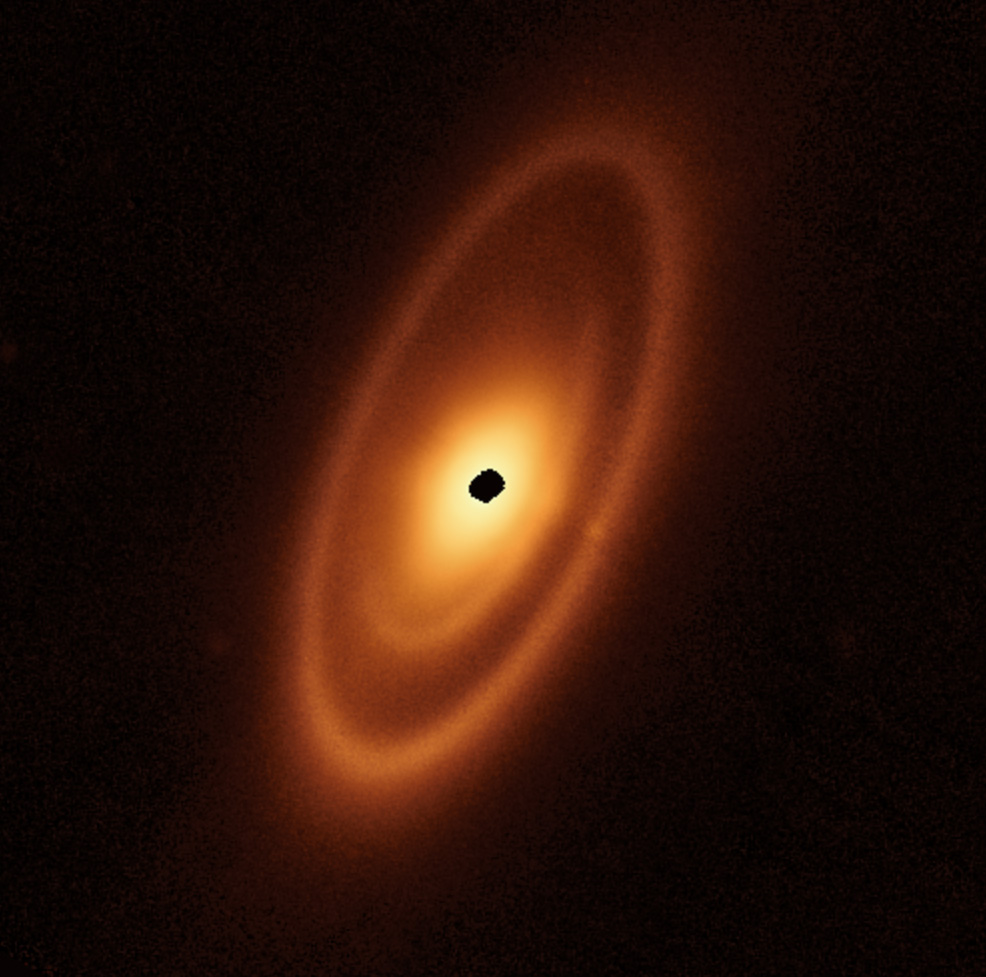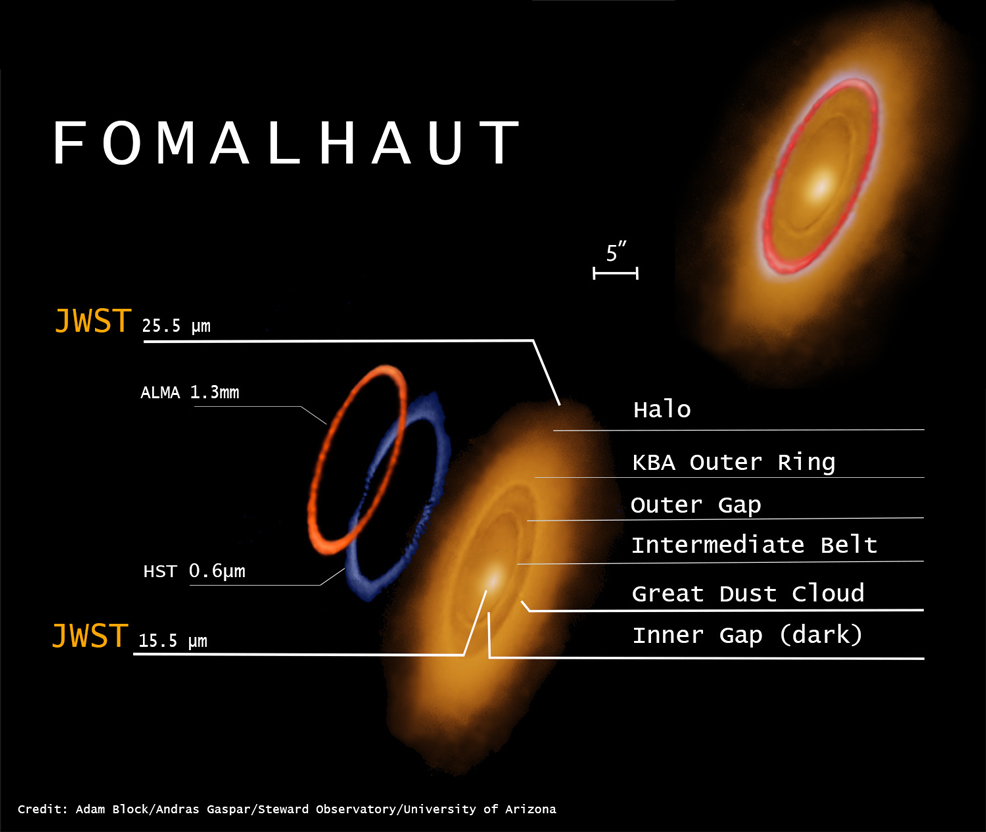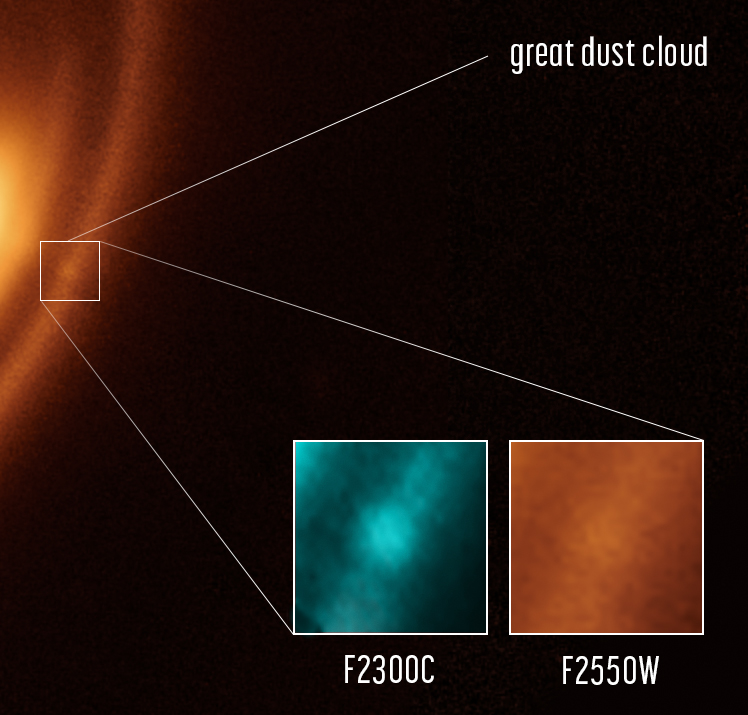
9th May 2023 Asteroid belts imaged by James Webb Space Telescope The first infrared image of asteroids outside our Solar System has been captured by the James Webb Space Telescope. Three distinct rings of debris are shown to exist around Fomalhaut, a young star 25 light years away.
Launched in December 2021, the James Webb Space Telescope (JWST) has been returning spectacular images and a trove of scientific data. Successor to the aging Hubble Space Telescope, its primary mirror is two and a half times larger and provides up to 100 times the sensitivity at infrared wavelengths. Just some of the JWST's recent accomplishments include the deepest and sharpest infrared view of the distant Universe, the first detections of carbon dioxide and photochemistry on an exoplanet, and confirmation of a new planet almost identical in size and mass to Earth. NASA has just announced its latest discovery – the first asteroid belt ever seen outside of our Solar System in infrared light. For this study, the JWST aligned itself towards a young A-type star called Fomalhaut, which lies 24.7 light years away and is one of the brightest objects in the night sky.
Astronomers first detected a dusty ring around Fomalhaut in 1983. Its existence has been inferred from telescopes on Mauna Kea, Hawaii, as well as NASA's Spitzer Space Telescope, Hubble, and the Atacama Large Millimeter/submillimeter Array (ALMA) in Chile. However, these previous observations lacked the extreme precision of the JWST and showed only a single ring. But in fact, there are three. Two inner belts have now been revealed for the first time. The outermost belt extends out to 23 billion kilometres (14 billion miles) from the star – or about 150 times the distance of Earth from the Sun – and is roughly twice the scale of our Solar System's Kuiper Belt of small bodies and cold dust beyond Neptune. "Where Webb really excels is that we're able to physically resolve the thermal glow from dust in those inner regions," said Schuyler Wolff, a member of the research team at the University of Arizona. "So you can see inner belts that we could never see before."
All three belts are most likely carved by the gravitational forces produced from unseen planets. Similarly, inside our own Solar System, Jupiter confines the main asteroid belt to a specific region, while the inner edge of the Kuiper Belt is sculpted by Neptune, and the outer edge could be shepherded by as-yet-unseen bodies beyond it. As Webb images more systems, astronomers will learn about the configurations of their planets. "The belts around Fomalhaut are kind of a mystery novel: Where are the planets?" said George Rieke, another team member and U.S. science lead for Webb's Mid-Infrared Instrument (MIRI), which made these observations. "I think it's not a very big leap to say there's probably a really interesting planetary system around the star." The JWST also captured what the research team is calling "the great dust cloud," which may be evidence for a large collision occurring in the outer ring between two protoplanetary bodies. The team's results are published in the journal Nature Astronomy.
Comments »
If you enjoyed this article, please consider sharing it:
|









